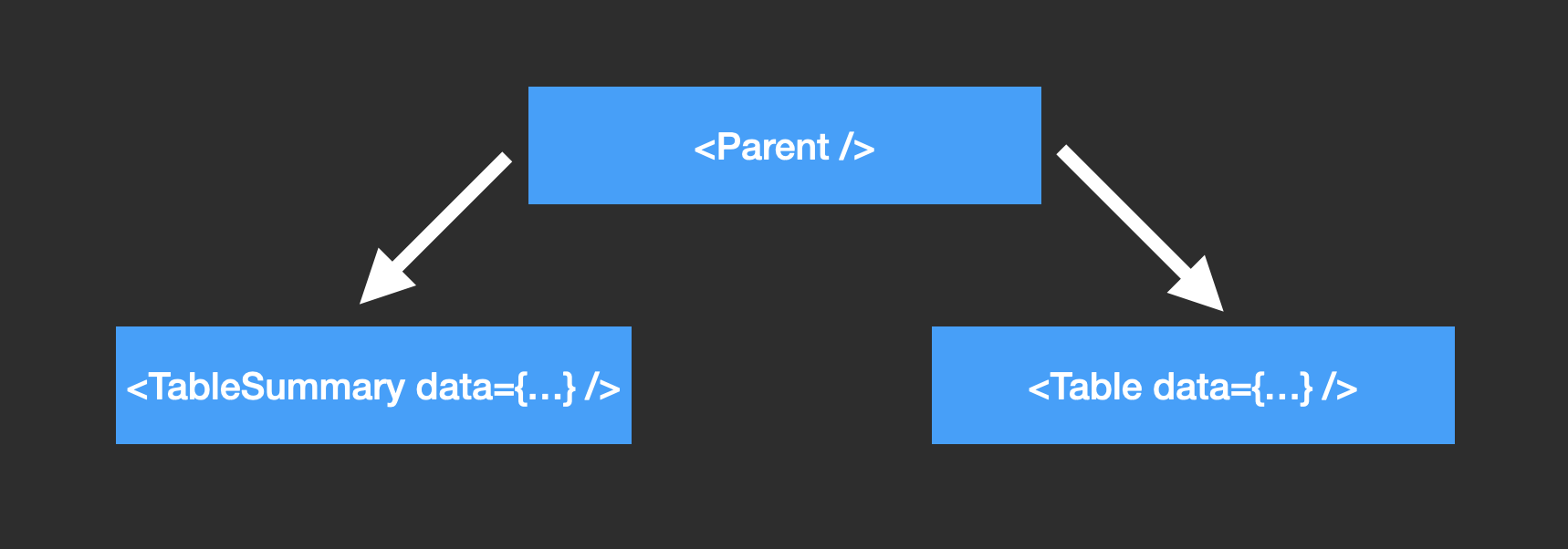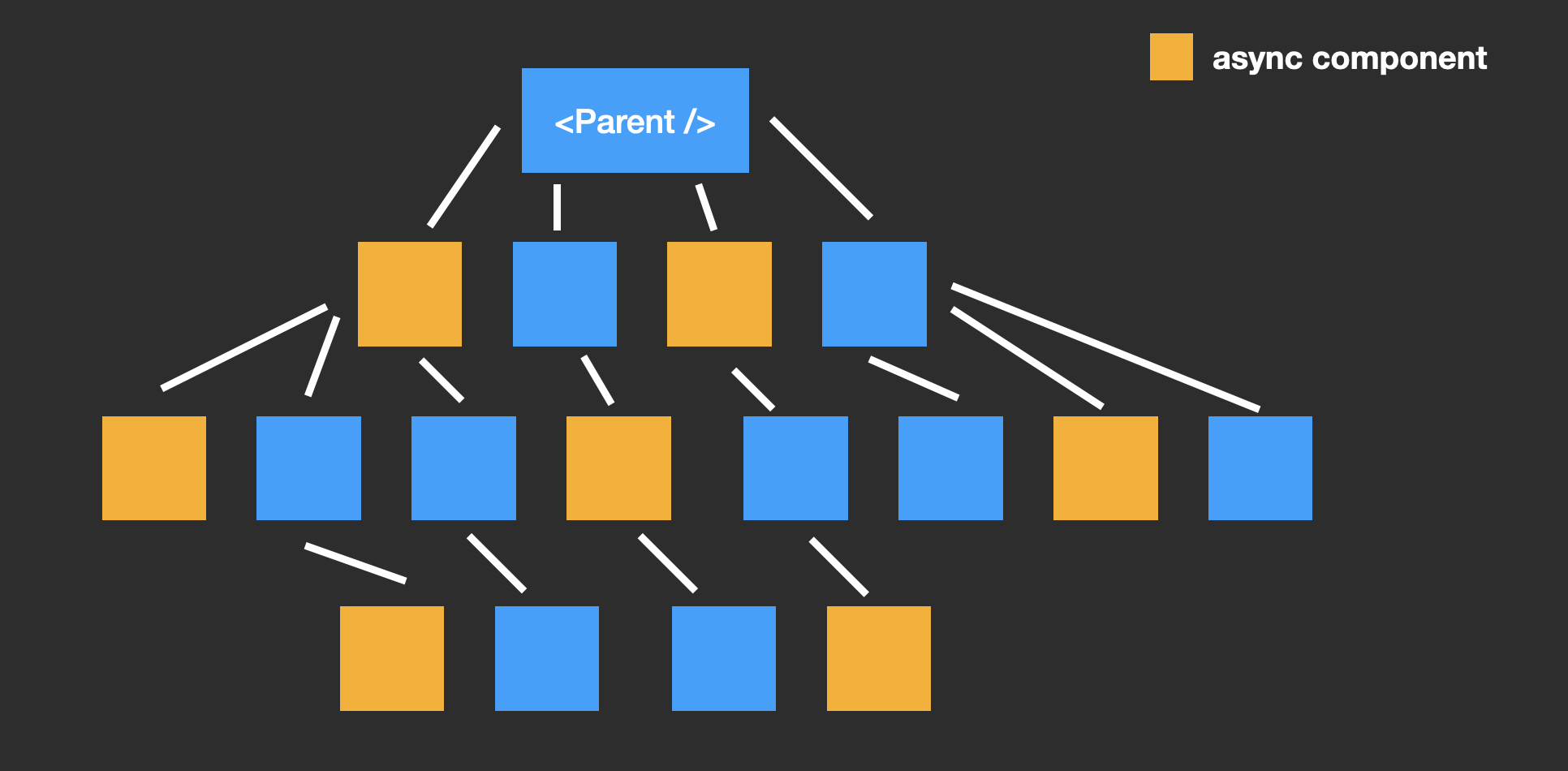Suspense
In this chapter we will learn everything you need to know about React Suspense.
When a portion of your component tree needs some async data to render, you can wrap these components with the <Suspense> component. This will allow you to display a fallback until you can render the async components.
Async components problem
Let's imagine we need to create the following React components:
<Table />- a table component that is grabbing data from an API and arranging it in a table<TableSummary />A summary data for the table - this data is taken from a different backend API then the<Table />is using
Those 2 components will need to send 2 server queries, and we want a loading spinner to be displayed until both of the components are ready.
For example if the <Table /> query takes 5 seconds and the <TableSummary /> query takes 2 seconds, we want to display a loading spinner for 5 seconds and then display the data for both of those components.
Naive solution
The naive solution would be to create a <Parent /> component that will place the <Table /> and <TableSummary />, that component can send the 2 server queries and pass the data to the children components.

The problem with the naive solution
At times it helps to see that a solution is not ideal if you try to enlarge the problem, let's imagine instead of 2 component that needs to send a query, we now have 50 async components, all in different depths.

Now making the parent send 50 queries and passing all that data to those components will be cumbersome to say the least, we would need to create some kind of Context probably to pass that data, and the fact that the <Parent /> needs to deal with a lot of data that doesn't really concern him (except when to display the spinner) does not make our code look any better (also violates the single resposibility of the <Parent />).
Notify parent using throw
Did you know that on some conditions you can send data up the tree to a certain parent using throw?
There are few conditions to use throw as means for sending data to parent:
- The
throwmust be located in therenderfunction or lifecycle hooks - The
throwcan not be located in events, or timer, or async calls. - Up the tree from the component that threw there should be a parent that satisfies few conditions for catching.
So which parent will grab the thrown data?
The parent that will grab the thrown data is the first parent that satisfies the following conditions:
- If the
throwndata is an instance ofPromiseit will be catched by the first<Suspense>up the tree - All other types or promise instance with no
<Suspense>to catch it will be catched by the first<ErrorBoundary>up the tree (We will talk onErrorBoundaryin future lessons)
If there is no one to catch the thrown data, the usuall Javascript uncaught exception will happen (usually resulting in a crash).
What is <Suspense>
<Suspense> can wrap part of your component tree, where some of the wrapped components (can be 0 or more) can throw a promise.
Promise can be in 3 states:
pending- the promise is still waiting for the data and the<Suspense>fallback will be displayedresolved- the promise is resolved and the<Suspense>will display the wrapped componentsrejected- the promise is rejected and the<Suspense>will send the error to the next error boundary.
Common mistake
Make sure you are not regenerating the promise on each render, if you do, the <Suspense> will think that the promise is pending and will display the fallback.
Suspense demo
In the following example we want a component to only render after 5 seconds.
For this we are creating a Promise that will resolve after 5 seconds, and we are throwing that promise in the render function of the component.
Notice that App.js is wrapping the AsyncComponent with <Suspense> and passing a fallback prop.
Summary
<Suspense>can wrap a portion of your component tree<Suspense>will display afallbackuntil all the promises that were thrown in the wrapped components are resolved<Suspense>will display the wrapped components once all the promises are resolved
This is just the tip of the iceberg, we will dedicate this chapter to learn the different common use cases of <Suspense>, rather it's lazy loading, server queries, the use function, the implications on server side rendering and more.
So jump on to the next lesson to learn more about <Suspense>.